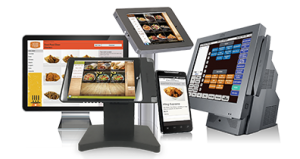 Point of sale (POS) systems keep restaurants running, but they are often the last piece of equipment in the restaurant to get an upgrade. As modern POS evolves and improves, old systems fall further behind, putting restaurants that fail to keep up at a disadvantage.
Point of sale (POS) systems keep restaurants running, but they are often the last piece of equipment in the restaurant to get an upgrade. As modern POS evolves and improves, old systems fall further behind, putting restaurants that fail to keep up at a disadvantage.
As this POS Nation case study says, advances in POS software will always outgrow your existing hardware. Free software updates are useless if the hardware doesn’t have the processing power to run it. In fact, newer software usually takes up more space on older computers, which can lead to even slower loading times and other problems.
A realistic life expectancy for most on-site POS systems is five to seven years. While that may seem short, think about the electronics in your personal life – your smartphone, your computer, your tablet. How many of those are newer than seven years old?
Despite growing frustrations and maintenance costs, restaurateurs have a tendency to hold onto their outdated systems much longer than their smartphones. They cite a variety of reasons: I don’t have time to research a new system, I don’t have room in my budget, I don’t want to have to re-train my staff, etc.
Despite these reservations, more than half of the respondents to Hospitality Technology’s 2016 POS Software Trends survey plan to research, test or install a new POS system in the new year. Should you be one of them?
When is it Time to Upgrade Your Restaurant POS?
To decide if the time is right for a new POS, ask the following questions:
1) How Well Does Your POS Function Now?
 Take some time to think about your POS system’s place in your restaurant.
Take some time to think about your POS system’s place in your restaurant.
- When things get busy, does your system make things easier or more difficult?
- Are you spending more time than you should on maintenance, updates and troubleshooting?
- Are you managing restaurant operations like inventory, labor, and sales from different applications?
- Is it difficult to make changes to menu items, prices, and other data across all of your connected terminals?
- Do you have to be at your restaurant to access your POS?
- Does your system let you use and manage customer information like email, loyalty programs, and other engagement channels?
Dig deeper into these questions by asking your staff how they feel about the system. What do they like about your POS? What frustrates them when they use it? If staffers have worked at other restaurants, ask them about the difference between their old system and the one you are using now.
Consider your customers’ opinions during this process as well. Although your guests don’t interact directly with your POS system, think about any complaints that you get regularly and how they might be related to your operations. How will a new POS reduce those complaints and improve your customer experience?
Your answers to these questions will give you a baseline of understanding if you decide to start looking for a new POS for your restaurant.
2) What Do You Want From a New POS?
Before you start searching for a new restaurant POS, ask: what do I want from a new system?
Some of your first answers might be painfully obvious, like “not waiting 20 minutes for the system to boot up” or “fewer crashes”. There are no wrong answers to this question, but if you’re going to invest in a new POS, knowing what you want it to do will help you direct your search.
 Do you need to increase revenue? Make operations more efficient? Increase customer retention? Are you looking for a POS that will let you spend more time away from the restaurant?
Do you need to increase revenue? Make operations more efficient? Increase customer retention? Are you looking for a POS that will let you spend more time away from the restaurant?
Your list of goals for a new system will also give you a starting point for discussions with POS sales representatives.
3) How Will Modern POS Systems Meet Your Needs?
By now you should have established what your current POS system’s shortfalls are and what your goals are for a new system. After that comes the fun part – examining how modern POS systems match up with your wish list.
Restaurant management blog Toast provides a template that makes this process even easier. Start with one of your goals – for example, spending less time on site managing your POS system. Then single out the obstacle to your goal, which in this case is an older POS system that only allows access to your data from an on-premise computer.
What is the solution? It’s simple – upgrading to a cloud-based POS will allow you to access and make changes to your POS from any Internet-enabled device, including smartphones and tablets.
Another example: you want to improve customer retention by creating a loyalty program. But your outdated POS lacks the functionality to manage such a program beyond a spreadsheet full of email addresses.
What is the solution? Newer POS systems, especially Software as a Service (SaaS), can integrate easily with other cloud-based applications, including third-party managed customer loyalty applications.
